Concept 6: RNN, LSTM and GRU
There are 3 types of vanilla recurrent neural network: the simple (RNN), gated recurrent unit (GRU) and long short term memory unit (LSTM).
RNN - Recurrent Neural Network
An RNN works like this: First words get transformed into machine-readable vectors. Then the RNN processes the sequence of vectors one by one.

Processing sequence one by one
While processing, it passes the previous hidden state to the next step of the sequence. The hidden state acts as the neural networks memory. It holds information on previous data the network has seen before.

Passing hidden state to next time step
Let’s look at a cell of the RNN to see how you would calculate the hidden state. First, the input and previous hidden state are combined to form a vector. That vector now has information on the current input and previous inputs. The vector goes through the tanh activation, and the output is the new hidden state, or the memory of the network.
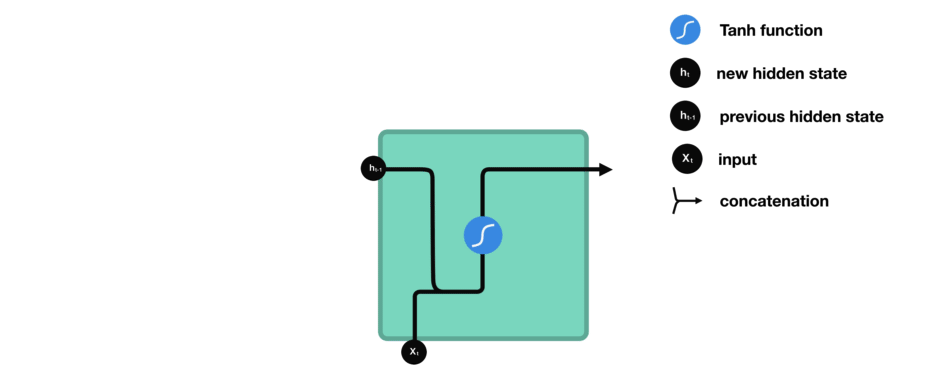
RNN cell
The tanh activation is used to help regulate the values flowing through the network. The tanh function squishes values to always be between -1 and 1.
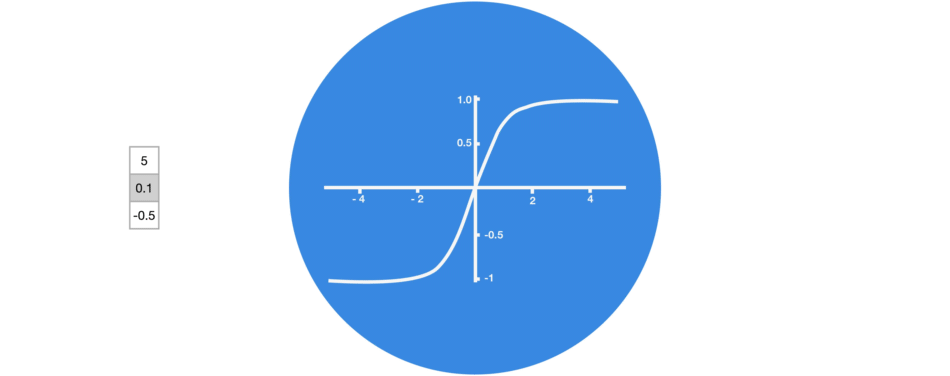
Tanh squishes values to be between -1 and 1
When vectors are flowing through a neural network, it undergoes many transformations due to various math operations. So imagine a value that continues to be multiplied by let’s say 3. You can see how some values can explode and become astronomical, causing other values to seem insignificant.

Vector transformations without tanh
A tanh function ensures that the values stay between -1 and 1, thus regulating the output of the neural network. You can see how the same values from above remain between the boundaries allowed by the tanh function.

Vector transformations with tanh
RNN suffers from short-term memory. If a sequence is long enough, they’ll have a hard time carrying information from earlier time steps to later ones. So if you are trying to process a paragraph of text to do predictions, RNN may leave out important information from the beginning.
During back propagation, RNN suffers from the vanishing gradient problem. Gradients are values used to update a neural networks weights. The vanishing gradient problem is when the gradient shrinks as it back propagates through time. If a gradient value becomes extremely small, it doesn’t contribute too much learning.
So in RNN, layers that get a small gradient update stop learning. Those are usually the earlier layers. So because these layers don’t learn, RNN can forget what it seen in longer sequences, thus having a short-term memory.
LSTM and GRU were created as the solution to short-term memory. They have internal mechanisms called gates that can regulate the flow of information.
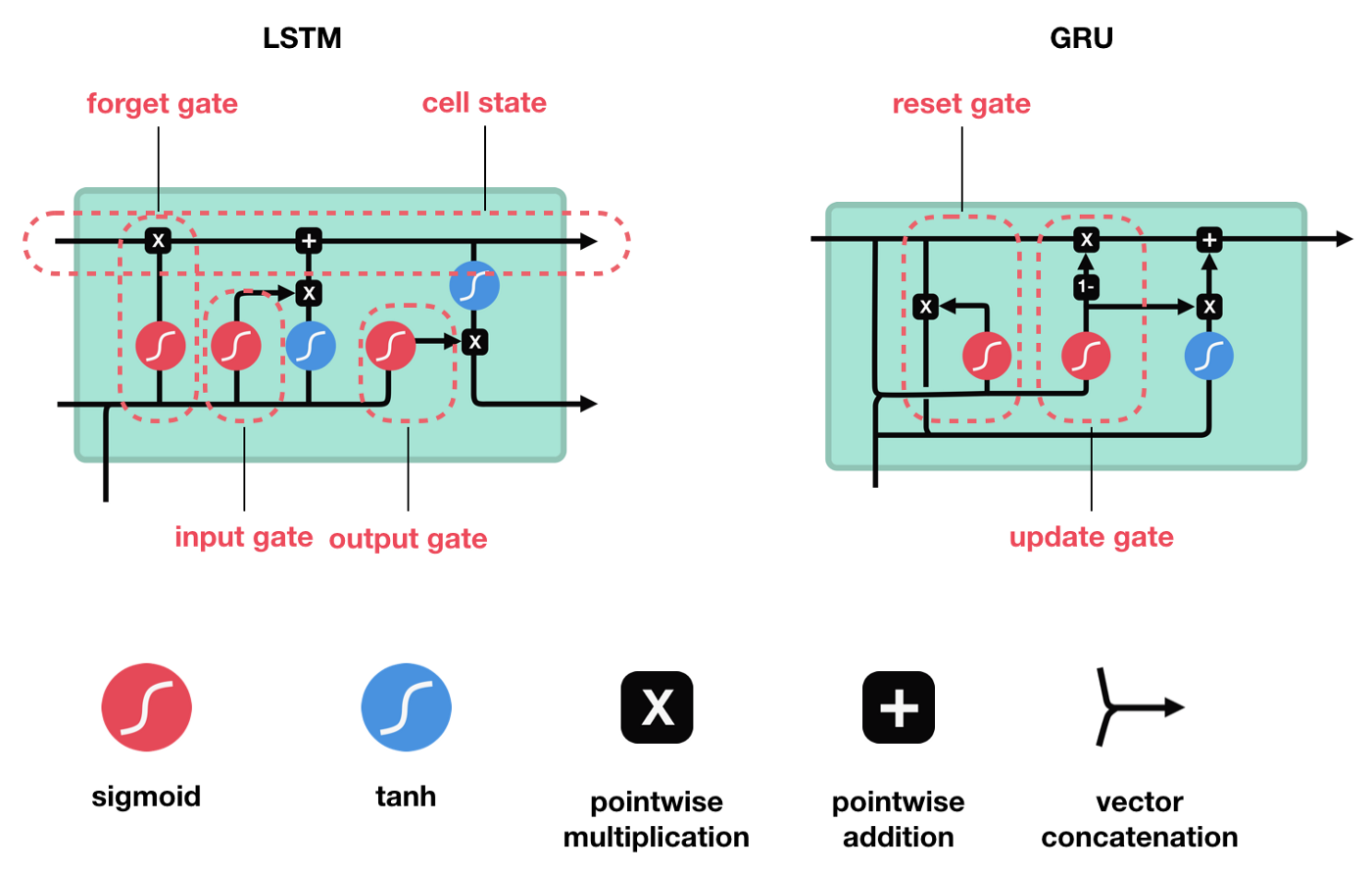
These gates can learn which data in a sequence is important to keep or throw away. By doing that, it can pass relevant information down the long chain of sequences to make predictions. Almost all state of the art results based on RNNs are achieved with these two networks.
LSTM - Long-Short Term Memory
An LSTM has a similar control flow as a RNN. It processes data passing on information as it propagates forward. The differences are the operations within the LSTM cells. These operations are used to allow the LSTM to keep or forget information.

LSTM cell and its operations
The core concept of LSTM are the cell state, and it’s various gates. The cell state act as a transport highway that transfers relative information all the way down the sequence chain. You can think of it as the “memory” of the network. The cell state, in theory, can carry relevant information throughout the processing of the sequence. So even information from the earlier time steps can make it’s way to later time steps, reducing the effects of short-term memory. As the cell state goes on its journey, information gets added or removed to the cell state via gates. The gates are different neural networks that decide which information is allowed on the cell state. The gates can learn what information is relevant to keep or forget during training.
Gates contains sigmoid activations. A sigmoid activation is similar to the tanh activation. Instead of squishing values between -1 and 1, it squishes values between 0 and 1. That is helpful to update or forget data because any number getting multiplied by 0 is 0, causing values to disappears or be “forgotten.” Any number multiplied by 1 is the same value therefore that value stays the same or is “kept.” The network can learn which data is not important therefore can be forgotten or which data is important to keep.
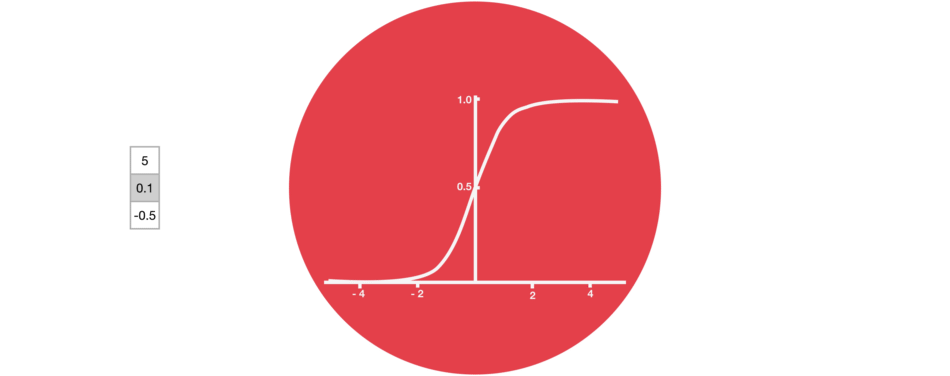
Sigmoid squishes values to be between 0 and 1
Let’s dig a little deeper into what the various gates are doing.
Forget gate
This gate decides what information should be thrown away or kept. Information from the previous hidden state and information from the current input is passed through the sigmoid function. Values come out between 0 and 1. The closer to 0 means to forget, and the closer to 1 means to keep.
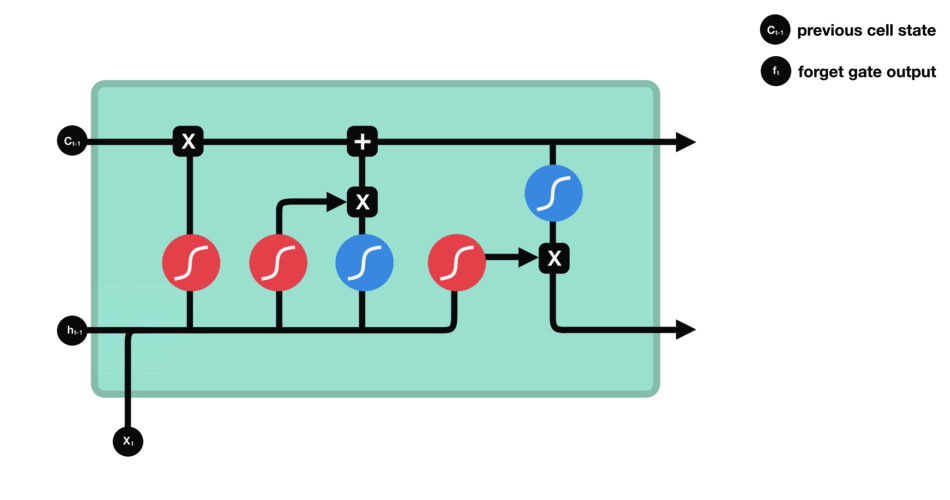
Forget gate operations
Mathematical process:

Input Gate
To update the cell state, we have the input gate. First, we pass the previous hidden state and current input into a sigmoid function. That decides which values will be updated by transforming the values to be between 0 and 1. 0 means not important, and 1 means important. You also pass the hidden state and current input into the tanh function to squish values between -1 and 1 to help regulate the network. Then you multiply the tanh output with the sigmoid output. The sigmoid output will decide which information is important to keep from the tanh output.
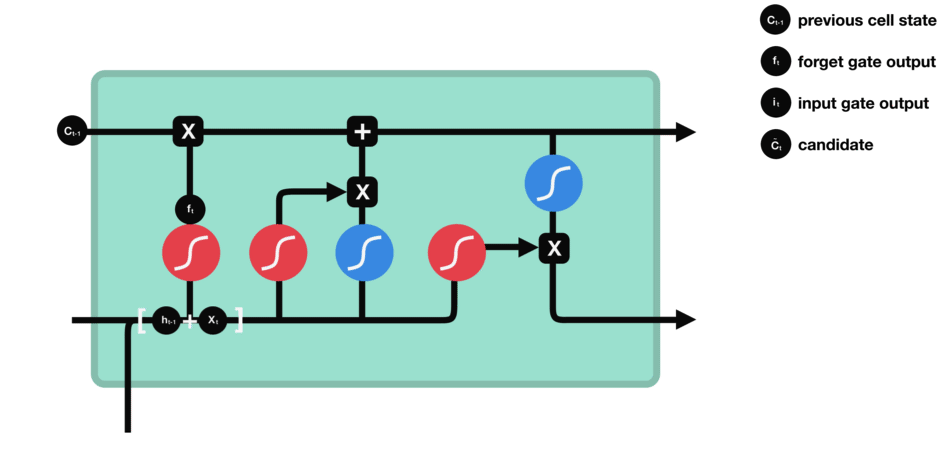
Input gate operations
Mathematical process:

Cell State
Now we should have enough information to calculate the cell state. First, the cell state gets pointwise multiplied by the forget vector. This has a possibility of dropping values in the cell state if it gets multiplied by values near 0. Then we take the output from the input gate and do a pointwise addition which updates the cell state to new values that the neural network finds relevant. That gives us our new cell state.
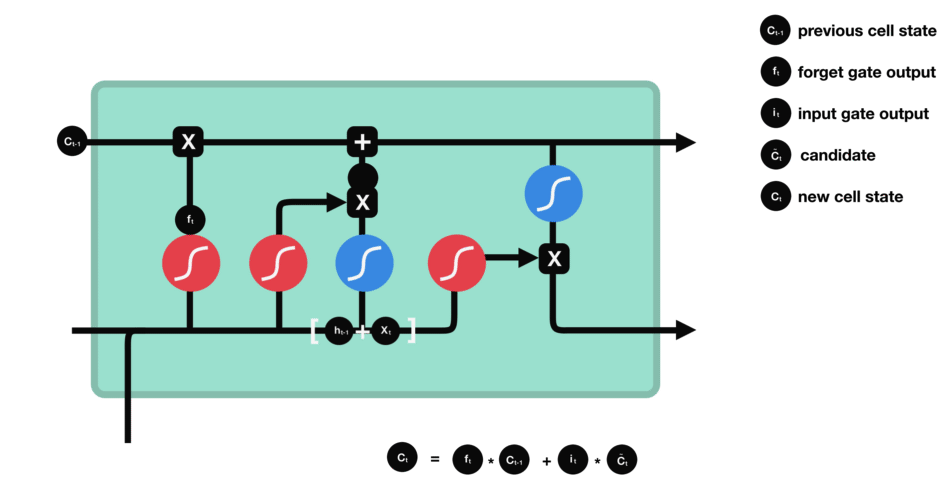
Calculating cell state
Mathematical process:

Output Gate
The output gate decides what the next hidden state should be. Remember that the hidden state contains information on previous inputs. The hidden state is also used for predictions. First, we pass the previous hidden state and the current input into a sigmoid function. Then we pass the newly modified cell state to the tanh function. We multiply the tanh output with the sigmoid output to decide what information the hidden state should carry. The output is the hidden state. The new cell state and the new hidden is then carried over to the next time step.
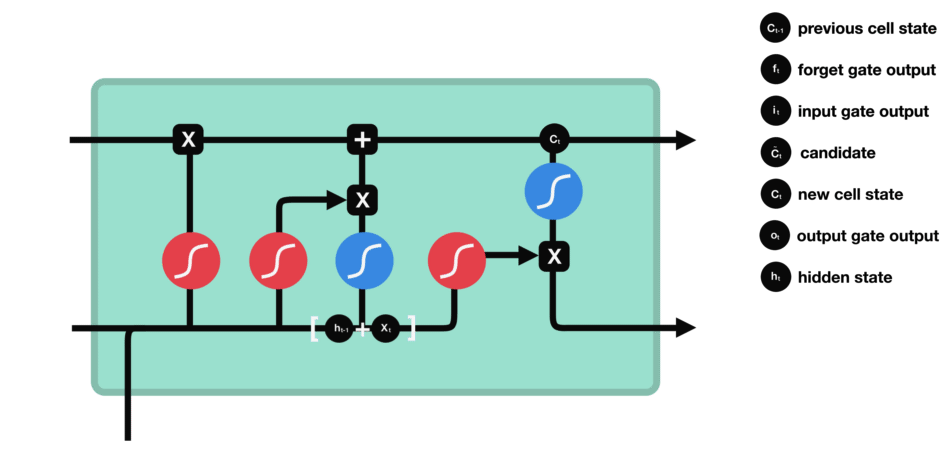
Output gate operations
Mathematical process:

GRU - Gated Recurrent Unit
The GRU is the newer generation of RNNs and is pretty similar to an LSTM. GRU got rid of the cell state and used the hidden state to transfer information. It only has two gates, reset gate and update gate.
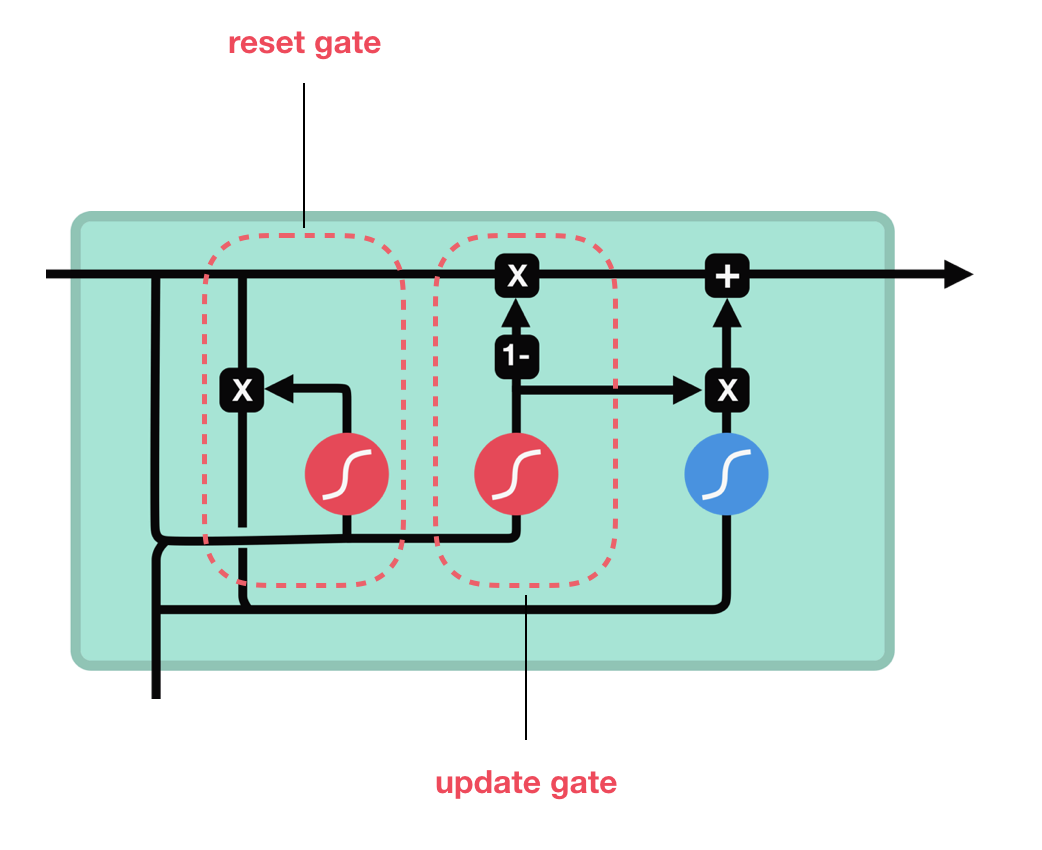
GRU cell and its gates
Mathematical process:
